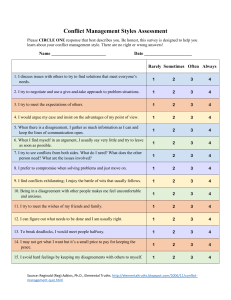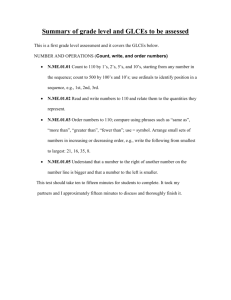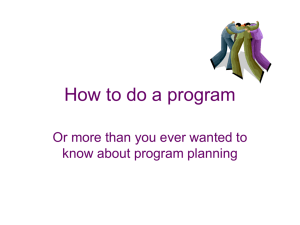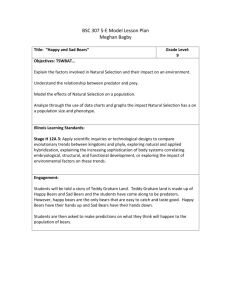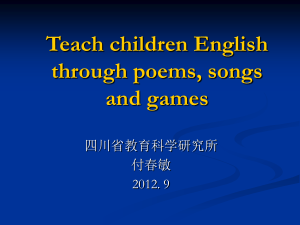Document 17596420
advertisement
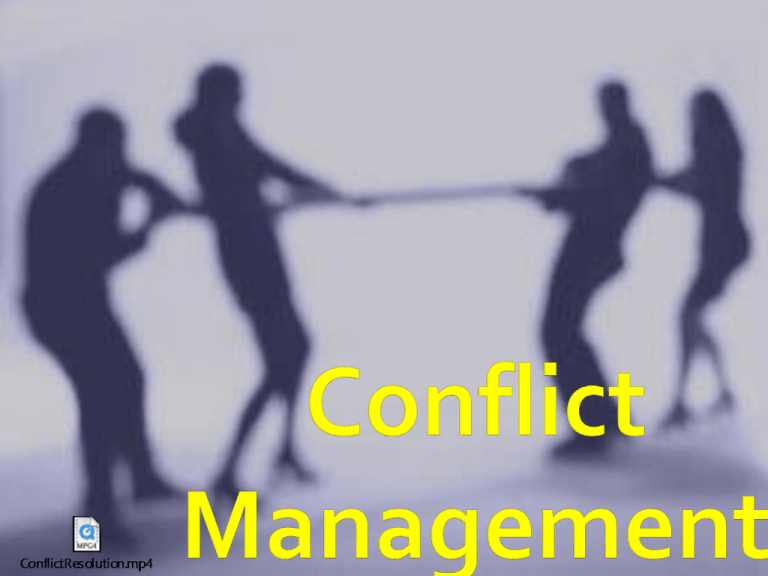
Everyone handles conflict differently. The 5 conflict management styles are: Competing Avoiding Collaborating Accommodating Compromising Shark “I win, you lose” Sharks try to overpower opponents by forcing them to accept the shark’s solution to the conflict. Their goals - highly important Relationships - minor importance Seek to achieve their goals at all costs Not concerned with the needs of others Do not care if others like or accept them Conflict solution -one person wins and one person loses They, of course, want to be a winner. Winning gives sharks a sense of pride and achievement. Losing gives them a sense of weakness, inadequacy and failure. Tactics include attacking, overpowering, overwhelming, and intimidating. Owl “I win, you win” Owls highly value their own goals and relationships. They view conflict as a problem to be solved and to seek solution that achieves both their goals and the goals of the other person. Owls see conflicts as a means of improving relationships by reducing tensions between two persons. They try to begin a discussion that identifies the conflict as a problem. By seeking solutions that satisfy both themselves and the other person, owls maintain the relationship. Owls are not satisfied until a solution is found that achieves their goals and the other person’s goals. They are not satisfied until the tensions and negative feelings have fully resolved. Turtle “You bend, I bend” Turtles withdraw into their shells to avoid conflicts. They give up their goals and relationships, they avoid people and issues over which the conflict is taking place. Turtles believe it is easier to withdraw from a conflict than to face it. Teddy Bear “I lose, you win” To Teddy Bears, the relationship is of great importance while their own goals are of little importance. Teddy Bears want to be accepted and liked by others. They think that conflict should be avoided in favor of harmony and that people cannot discuss conflicts without damaging relationships. They are afraid that if the conflict continues, someone will get hurt and that would ruin the relationship. Teddy Bears say “I’ll give up my goals and let you have what you want, in order for you to like me.” Teddy Bears try to smooth over the conflict out of fear of harming the relationship. Fox “You bend, I bend” Foxes are moderately concerned with their own goals and their relationship with others. Foxes seek a compromise; they give up part of their goals and persuade the other person in a conflict to give up part of their goals. They seek a conflict solution in which both sides gain something; the middle ground between two extreme positions. They are willing to sacrifice part of their goals and relationships in order to find agreement for the common good. What do you think would be the most effective ways of dealing with conflict out of the five styles? Why? Competing Avoiding Collaborating Accommodating Compromising Conflict is inevitable; Conflict develops because we are dealing with people's lives, jobs, children, pride, selfconcept, ego and sense of mission or purpose Early indicators of conflict can be recognized; There are strategies for resolution that are available and DO work; Although inevitable, conflict can be minimized, diverted and/or resolved. 1. Task: the content and goals of the work (Example: you do not agree on topic your team has decided to present on) 2. Relationship: interpersonal relationships (Example: you don’t get along with your boss) 3. Process: how work gets done. (Example: you think that everyone should have equal parts, but your team members disagree) Poor communication Poor leadership Irresponsibility Insufficient resources Underlying stress or tension Dissatisfaction Helps raise and address any problems Brings about necessary change Allows people to express how they feel Helps people learn how to recognize and benefit from each other’s differences Encourages communication in order to work out conflict Any other benefits?? Decreases productivity Low moral Conflict continues to escalate Causes inappropriate behavior Creates tension among co-workers; reduces cooperation #1 Address the problem, not the personality Communicate with the person. In a calm, controlled tone tell the person how you feel when conflict occurs. Use “I” statements, not “You” statements. Address what happened not why it happened. Example, “I feel disrespected when you don’t listen to me during our meetings.” #2 Practice Active Listening During the conversation, pay attention, and show the other person you are interested in what they have to say. Remember you don’t have to agree with the person but your goal is to understand what he/she is trying to say. #3 Create possible solutions Brainstorm a list of possible solutions. Remember to negotiate. Think win-win, not win-lose. Discuss solutions that have not worked in the past #4 Agree on a possible solution for you both to try. Come to a conclusion to try. If it doesn’t work know that you can readdress the problem. Consider a follow-up meeting to discuss the progress. Make an effort! Watch the video and using your worksheet, take the position of either the husband or the wife and write how you would best handle the situation using our 4 steps to conflict resolution. Work with your group to act out a conflict in front of the class. Demonstrate the 4 steps to Conflict Resolution as you work through the conflict. Also, have your teammates represent several of the 5 Conflict Management Styles in your presentation. The presentation should take 3-5 minutes.
